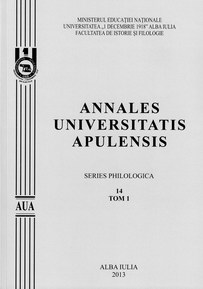La relation texte-image dans la publicité télévisée roumaine
The relationship between text and image in the Romanian television advertising
Author(s): Adriana Ecaterina DinişSubject(s): Language and Literature Studies
Published by: Universitatea »1 Decembrie 1918« Alba Iulia
Keywords: TV advertising; semiotic models; discursive models; cultural context; iconic message; Vodafone
Summary/Abstract: As far as TV commercials are concerned, the attitude of the audience is more and more critical. Their number has increased on the free channels and the viewers confess that they feel annoyed and even assaulted by them. In order to make the commercials attractive, their strategies are varied and a TV commercial is the result of the collaboration of professionals belonging to various domains: sociologists, psychologists, semioticians, linguists, graphic designers, musicians, etc. Our purpose in this article is to study the relationship which exists between the text and the image, using the tools that semiotics can offer. The analyses in this field of the past decades have been influenced by Roland Barthes (1964) or Umberto Eco (1968), who created the first models of semiotic analysis. Based on these models, which have been reunited under the term ‘compositional analysis’, the simplest method is the one which breaks the image into types of messages or successive layers of meaning. In order to analyze the discursive strategies in advertising, we are going to use the semiolinguistic model presented by Patrick Charaudeau in Langage et Discours, Éléments de sémiolinguistique (Théorie et Pratique) (1983). The TV commercial that we have chosen to study is Vodafone – Împreună suntem mai puternici.
Journal: Annales Universitatis Apulensis. Series Philologica
- Issue Year: 14/2013
- Issue No: 3
- Page Range: 403-420
- Page Count: 18
- Language: French

